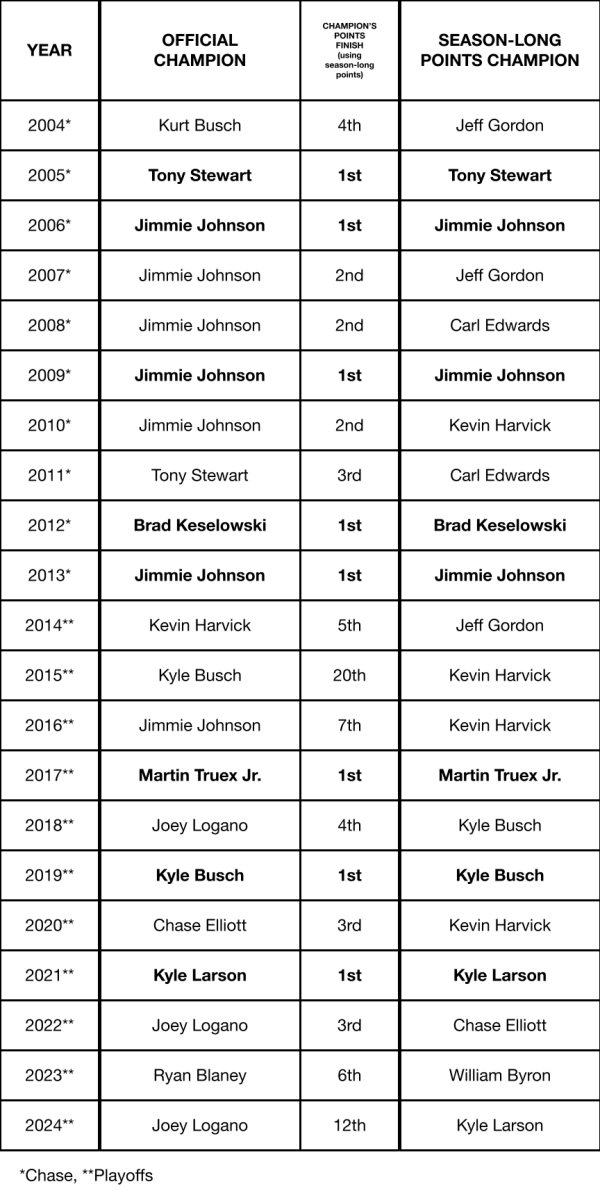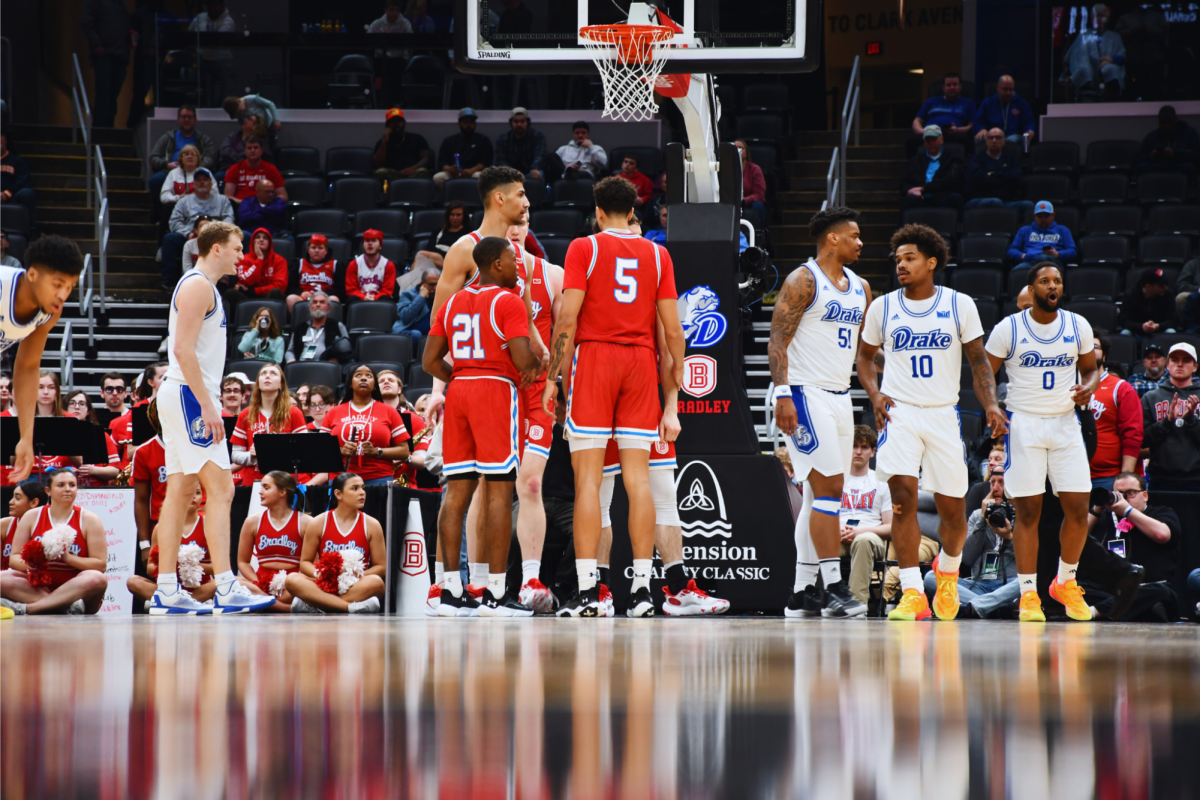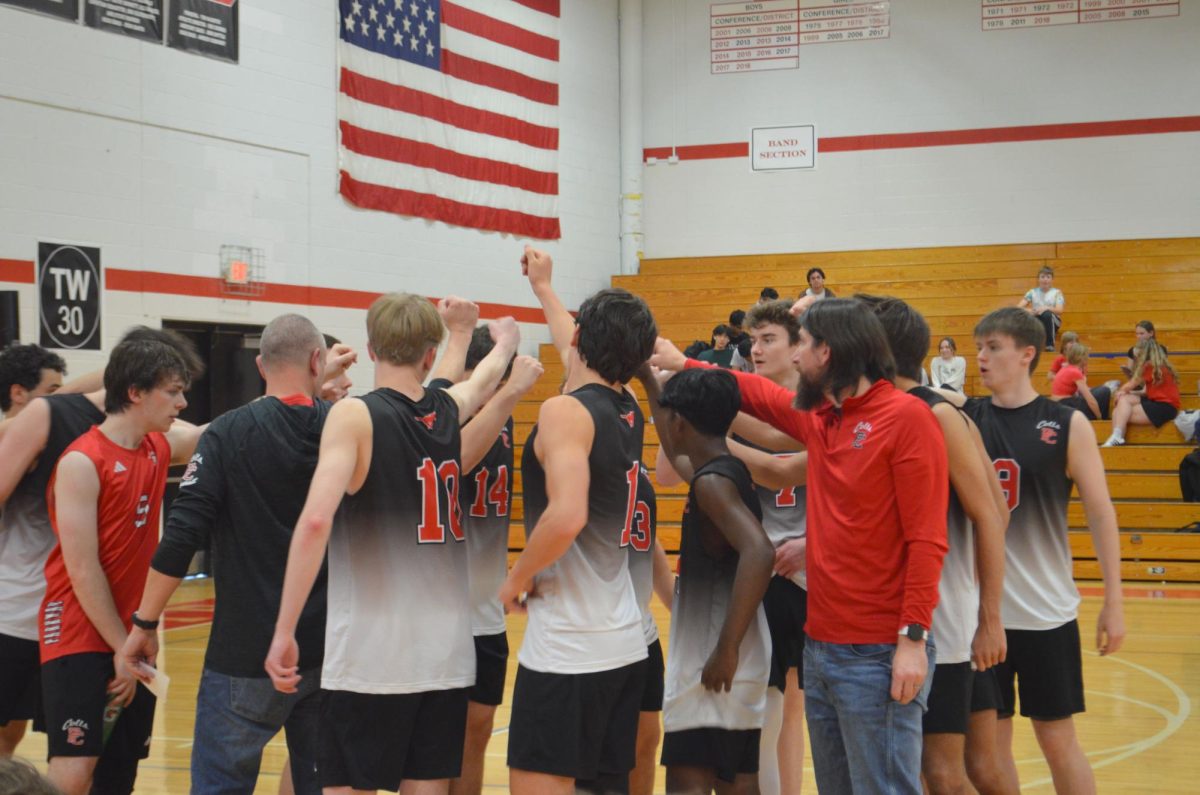There’s a problem plaguing NASCAR right now, and the problem is NASCAR itself.
Think about it. Do you know any current NASCAR drivers? Do you hear people talking about the sport? When is the last time you’ve seen a driver in an advertisement on TV?
Why is this? The sanctioning body, the organization of NASCAR, has repeatedly shot itself in the foot, and turned away their longtime fans, in service of a crop of new fans interested in their gimmicks. The only problem is, those fans do not exist.
Take the 28th race of the 2025 season, run right here in the St. Louis area, the second race in the NASCAR Playoffs. On USA Network, the race got 1.5 million viewers.
Compare that to 2002, just two years prior to the introduction of the Chase for the Nextel Cup. On TNT, another cable network, at a similar time of day, and also on a Sunday, the 28th race of the season, at Dover, got 3.5 million.
And even in 2013, the last year prior to the introduction of the Playoffs, the 28th race at New Hampshire and the second race of the Chase. On ESPN, yet another cable network, it had 3.7 million.
Okay, I know what you’re thinking. Playoffs? Chase? Let me explain.
In 2004, NASCAR, and their new title sponsor, wireless communications company Nextel, debuted the “Chase for the Nextel Cup.” Unlike the past 29 seasons under the “Latford” system, named after its creator Bob Latford, where the driver with the most points at the end of the season became the champion, the Chase would reset the points for the top 10 drivers in the points standings after the 26th race of the year. Those ten drivers would be the only drivers competing for the championship the rest of the year, putting extreme emphasis on the last 10 races.
And, while it was a gimmick, it worked! The 2005 season, the second in the Chase era, remains the season with the highest TV ratings of any in NASCAR history.
In 2007, they expanded it to the top 12 drivers, and in 2011 they introduced a new points format, along with the fact that the top 10 would be joined by two wild card drivers.
But then, after 5 straight championships by driver Jimmie Johnson, and a scandal involving a purposeful caution by one driver to get his teammate into the Chase, which ended up causing 13 drivers to be entered that year (long story), in 2014, the format changed again.
The NASCAR Playoffs don’t make sense. Even their name doesn’t make sense. You don’t play in NASCAR, you race. Most attribute this as a sign of trying to further become a “stick-and-ball” sport, and trying to make every race a “Game 7 moment.”
It doesn’t work.
But what is it exactly?
The NASCAR Playoffs involve 16 drivers, with 4 getting eliminated after every round. Each round is three races long, except for the Championship 4, which is only one race, the final race. To qualify for the Playoffs, you must either win a race in the first 26 races, or make it in off points if you have not, under the condition that there are not 16, or more, drivers to have won a race.
Now here’s where the premise completely falls apart.
The policy of “win-and-you’re-in” has not been popular with fans or drivers, especially with one recent instance of an undeserved playoff spot, from just last year, where Harrison Burton, despite being 34th in points at the time of his win, the last of any driver to have run every single race to that point, got in after winning at Daytona.
And the trouble doesn’t end once the playoffs start. In 2020, despite compiling 9 wins, 20 top 5s, and 27 top 10s, all in a 36-race season, Kevin Harvick did not win the championship. He didn’t even make the Championship 4. He was eliminated in the penultimate race of the year after spinning Kyle Busch out while trying to pass him. This is what the playoffs do. They cause chaos and undeserved champions. In fact, over the past 21 years, only 8 of them featured the driver who would have been the champion under a season-long points format! And that’s only 3 of 11 for the Playoffs, compared to 5 of 10 for the Chase! And the lowest driver to win under season-long points during the Chase was 4th, meanwhile, one year, the driver in 20th place won under the Playoffs!
The fans hate it. The drivers hate it. It doesn’t make them more money. It doesn’t attract viewers on TV. Why do they keep it around?
NBC, the current media rights provider for the last 14 races of the season, including the ten playoff races, loves it.
What does that mean for the fans when the sport cares more about the TV network than the product? It means that they feel neglected for their loyalty. So many of them left. Especially when fan favorites like Dale Earnhardt Jr. and Jeff Gordon retired.
It’s time to end the gimmicks. Bring back the normal racing, and maybe, just maybe, people will come back. And NASCAR could once again rival the NFL.





